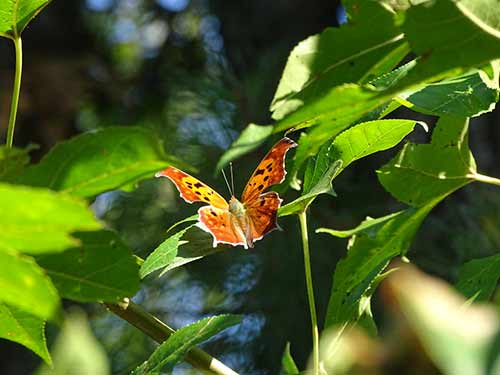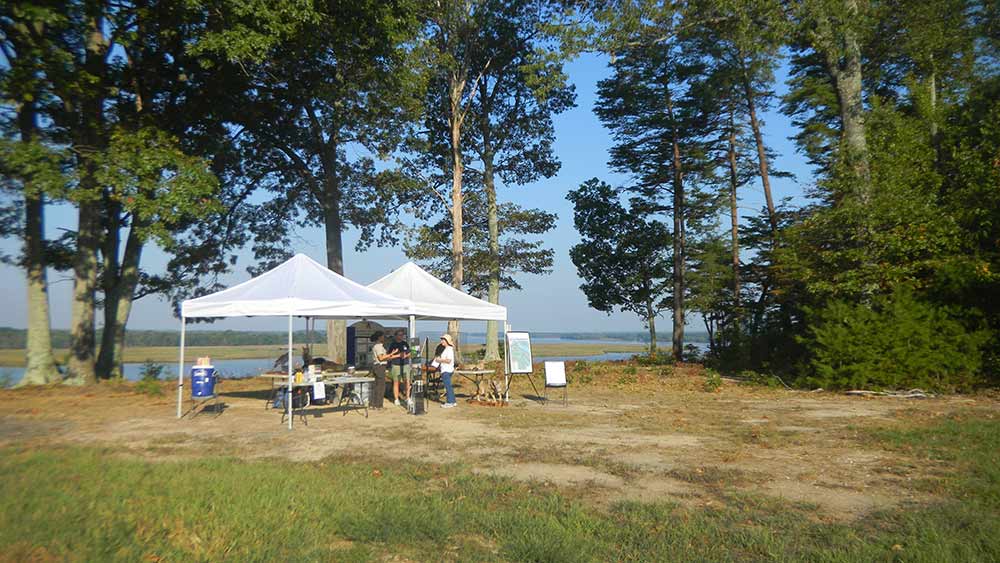 On Sunday, September 29, 2020, led by Lauren Cruz, Refuge Biologist, a group of thirty eager naturalists braved the 90-degree heat to identify flora and fauna on the newly acquired Fones Cliffs tract. Surveying the wildlife on the new property is an important guide to how the property should be managed. This quick survey is known as a BioBlitz.
On Sunday, September 29, 2020, led by Lauren Cruz, Refuge Biologist, a group of thirty eager naturalists braved the 90-degree heat to identify flora and fauna on the newly acquired Fones Cliffs tract. Surveying the wildlife on the new property is an important guide to how the property should be managed. This quick survey is known as a BioBlitz.
The stunning views of the Rappahannock River from the cliffs only added to the beauty of this warm fall day. Over 280 species were identified; 550 observations were made. Many results were reported on iNatualist. A map of where naturalists made observations and photographs of the finds are available online. You can reach the results through this link: https://www.inaturalist.org/projects/fones-cliffs-bioblitz-2019.
The top six avian species observed were: canada goose, turkey vulture, blue jay, double-crested cormorant, northern flicker, and bald eagle. Many eastern fence lizards were sighted. Naturalists saw many insects including gray hairstreaks and common checkered skippers. Observers spotted a very interesting fungi: pixie cup lichens.
Plants supportive of wildlife were found during the BioBlitz, including the common pawpaw, American persimmon, yellow crown beard, and mountain laurel. The pawpaw produces a fruit enjoyed by Native peoples as well as early pioneers. This fruit, known as the American banana, was a favorite dessert of George Washington. For more about the pawpaw go to http://www.earthy.com/Pawpaws-A-Uniquely-American-Fruit.aspx.
Unfortunately, invasive species were discovered as well: privet, lespedeza, tree of heaven, the common culprits. Also, many participants reported a very deep hole.
Cruz exclaimed, “We had a great turnout of effort at this event!”


Recent Comments